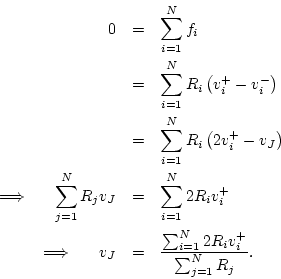In the more general case of ![]() ports being connected in
series, we have the physical constraints
ports being connected in
series, we have the physical constraints

The derivation is the dual of that in the parallel case (cf. Eq. (N.16)), i.e., force and velocity are interchanged, and impedance and admittance are interchanged:

The outgoing wave variables are given by